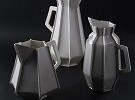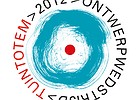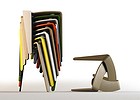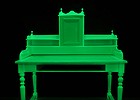Mine Kafon
Effective or Well Intended?
Designer Massoud Hassani graduated in 2011 at the Design Academy Eindhoven with Mine Kafon, a device to creal land mines. It consists of dozens of stems with synthetic stamps on their tips. The stems are attached to a cast-iron core equiped with satellite navigation. The device, that looks strikingly like a dandelion's parachute ball, is propelled by the wind. The satellite navigation tracks its route. If the Mine Kafon comes across a land mine and detonates it, the stems and stamps can easily be replaced. Items' editor-at-large and Design Academy's Walter Amerika debate about the pro's and con's of the design.
Recently, Hassani generated 100.000 Pounds via Kickstarter to develop te device further. His design attracted huge media attention, and still does. Early 2013, Hassani was a guest in Pauw & Witteman, a major prime-time news show on Dutch public television, and in 2012 his design was entered into the British Design of the Year Awards by the late Ed Annink. The Financial TImes wondered why Mine Kafon didn't win.
Items' editor-at-large Marc Vlemmings difers with FT; he thinks the good intentions of the designer ward off a critical assessment of the design.
Walter Amerika, head of the Market Department of the Design Academy Eindhoven, thinks the Mine Kafon is a very good design, which should be interpreted mainly symbolically. Design should – and can – address socially relevant questions as well.
... reageer










Wil je reageren op dit artikel? Stuur een mailtje naar de redactie.